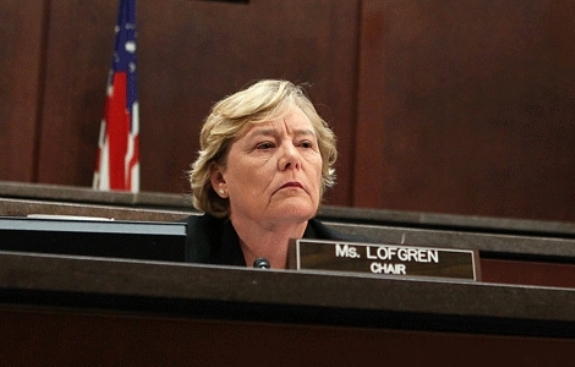Some would argue that ICE’s Secure Communities program has been fraught with problems ever since it launched in 2008—from concerns over the lack of federal oversight to questions regarding the criminality of immigrants targeted. But after months of back and forth over how and whether jurisdictions are able to opt-out of this immigration enforcement program (which shares the fingerprints of individuals booked into jails with federal databases), California Congresswoman Zoe Lofgren (D-CA) has had enough. This week, Rep. Lofgren called for an investigation into the actions of federal immigration officials whom she said lied about whether states and localities had the right to opt-out of the program.
Although ICE aims at installing Secure Communities in all state and local detention facilities nationwide by 2013, not all localities are on board. Several jurisdictions—including San Francisco and Santa Clara—requested to opt-out last year, but were given mixed responses about how the opt-out process works. ICE eventually laid out an “opt-out policy” in a memo ([jurisdictions] must formally notify its state identification bureau and ICE in writing (email, letter, or fax))—a process that was later confirmed by DHS Secretary Janet Napolitano in a letter to Rep. Lofgren.
But a month later, Janet Napolitano said that opting out of Secure Communities was not an option. In a Washington Post article, Napolitano commented that DHS does “not see this as an opt-in, opt-out program,” meaning that the fingerprints of anyone arrested would be run through a federal database whether cities liked it or not. As if that wasn’t bad enough, recently released internal documents obtained under the Freedom of Information Act (FOIA) reveal that ICE was purposefully vague and misleading about its definition “opting out” so that they could deploy Secure Communities as widely as possible before communities began to question it.
Now, Rep. Lofren is demanding to know why ICE officials lied about the opt-out process:
“It is inescapable that the [Department of Homeland Security] was not honest with the local governments or with me” about whether local jurisdictions must participate, said Rep. Zoe Lofgren (D-San Jose). “You can’t have a government department essentially lying to local government and to members of Congress. This is not OK.”
According to Lofgren, if localities had known that they were not able to opt-out of Secure Communities, they would have been able to “challenge ICE’s legal authority” to implement the program early on.
In an official response, ICE stated that “Secure Communities is not voluntary and never has been. Unfortunately, this was not communicated as clearly as it should have been to state and local jurisdictions by ICE when the program began.”
But Rep. Lofgren isn’t the only one who’s concerned. Immigration advocates have been raising red flags for months over ICE’s refusal to be transparent about Secure Communities, which is currently active in 1,200 jurisdictions in 41 states. People are worried that ICE is not following its stated intention to focus on immigrants with serious criminal convictions. Instead, ICE data reveals that the majority of people identified by Secure Communities have minor criminal convictions or have no criminal convictions. There are also concerns that the program leads to racial profiling and pretextual arrests. In fact, California and Illinois are both considering bills that would allow counties in their state to opt-out of the program.
Secure Communities seems to be an immigration enforcement program going from bad to worse. The confusion, subterfuge, and lack of transparency reveal a program in desperate need of repair and oversight. Hopefully, Rep. Lofgren will shed some much-needed light on a program that either needs to be cleaned up or closed down.
Photo by myce.com.
FILED UNDER: Department of Homeland Security, enforcement, Executive Branch, Janet Napolitano, undocumented immigration



